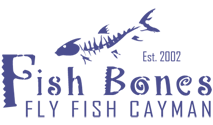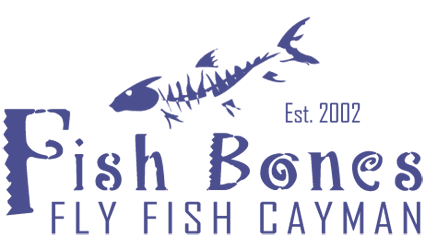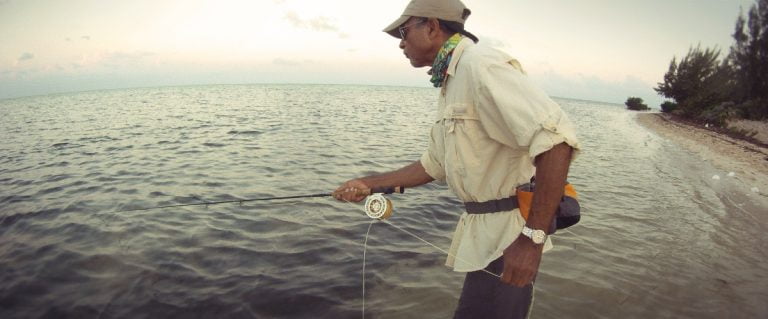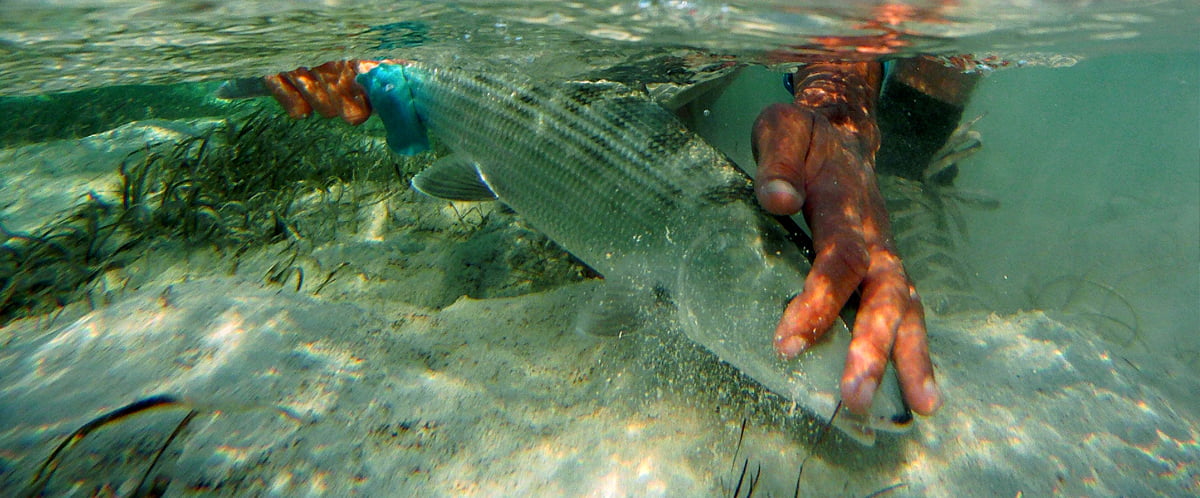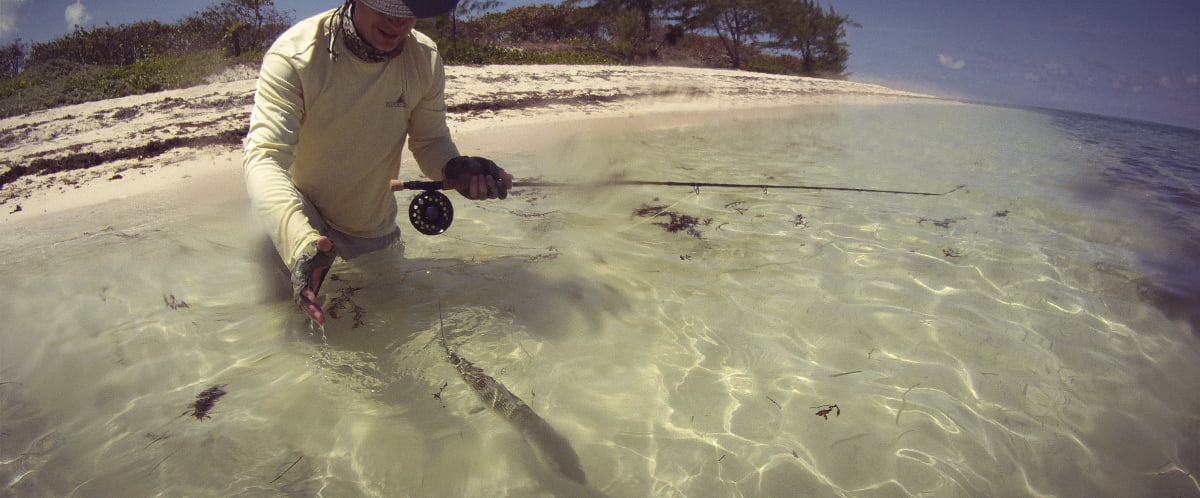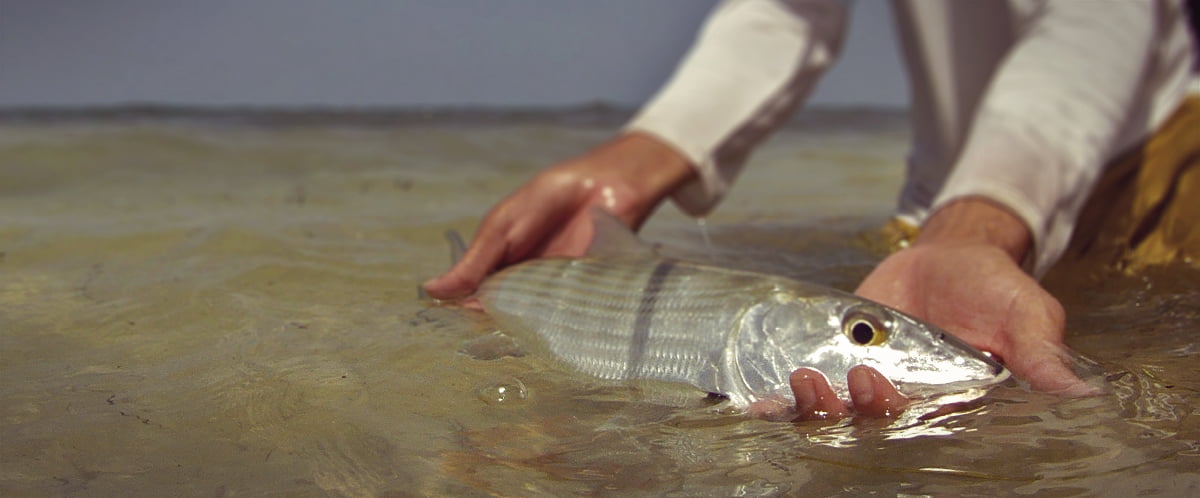Here’s a great video from Bonefish & Tarpon Trust. Learn the best bonefish catch and release practices from BTT Bahamas Initiative Manager Justin Lewis. Proper fish handling is essential to the survival of your catch, and to the overall health of the fishery, especially when you consider that research has shown that a bonefish kept out of the water for more than 15 seconds is 600% more likely to die! That is a shocking statistic.
Be a part of the solution and help preserve our fisheries for our daughters and sons. Educate. Share. Practice.
What is the Strip-Strike?
A strip-strike (a.k.a. strip-set) is a long pull with the line-hand to set the hook while fly fishing. While it’s mostly used in saltwater, but is just as effective for top-water bass fishing or streamer fishing for trout. However, in saltwater it is de rigueur. Trout-set on a bonefish and the only reward you’ll get is a resigned sigh from the guide.[1] Can’t take a picture of that.
Why does a strip-strike work on bonefish, but trout-set doesn’t? The answer that most saltwater anglers have heard is: “Raising the rod—trout set—pulls the fly away from the fish. But, if you strip-strike and miss, the fly only moves a foot or so and will still be in the zone so you can get another chance at that fish.”
Ok, fine, but that doesn’t explain why the trout set fails to actually set the hook at all. I’m not sure I’ve ever heard or read the real reason it’s nearly impossible to hook bones with a trout-set. The answer is actually simple, but does require an overview of how bonefish feed. Most freshwater species—trout, bass, etc.—eat a fly and turn. Trout turn back to their lie after taking a fly from the surface or snatching a nymph. Bass often take their food in a turning maneuver, heading back to their ambush spot. In either case the fish is headed away from the angler when he strikes, and the fish has its mouth closed around the fly. Raising the rod means you come tight and usually hook the fish in the corner of the mouth. Perfect.
This is exactly opposite from bonefish. Bonefish mostly feed on prey that only runs a short distance and then hides on the bottom. Of course, I have seen bonefish feeding on minnows and at those times they will strike a fly hard. But day in, day out, bonefish pick their food up off the bottom.
It’s common knowledge that bonefish are no good to eat; as their name suggests, they are full of bones. All Cayman bonefishing is catch-and-release. We all want these fish to be here the next time we hit the water; we want them here for our kids to enjoy just as much as we have. It’s up to us—the anglers—to keep our fish healthy with proper care.
Good release practices actually begin before you actually hook a bonefish, starting with the fly itself. Barbless flies will actually hook more fish and makes releasing them soooo much easier. Due to their rubbery mouths, bonefish almost never throw barbless flies.
Bonefish exposed to air
for more than 15 seconds
are 600% more likely to die.


